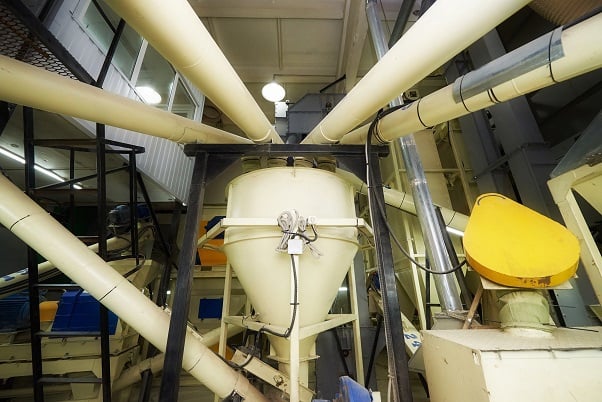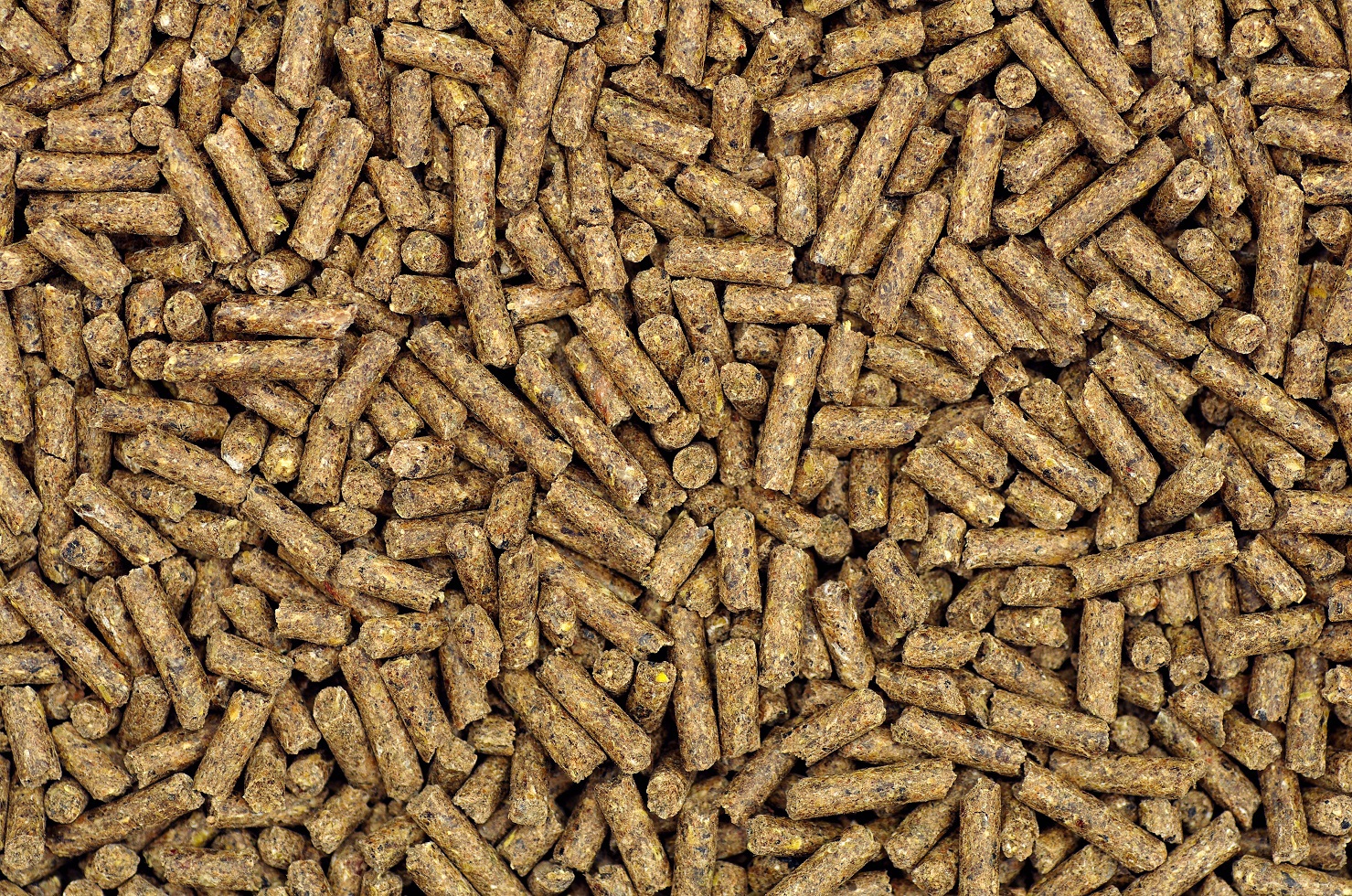
Feed Processing and Quality Programme
- Programme
Safeguarding the integrity of feed ingredients and finished feed while managing the economics of production can feel like a balancing act. When feed ingredients are sourced from faraway countries or even continents, it's often a matter of accepting the materials upon arrival – whether the quality is ideal or not – and hastening to prevent further loss of nutrients. It’s vital to perform stringent quality checks upon arrival and control quality along the production process in order to produce a safe, stable and high-quality end-product.

Feed safety is an ongoing journey that starts with the receipt of grains, by-products and other raw materials at the intake pit. It is essential to immediately start measuring and monitoring quality. While feed producers strive to ensure the best environment to minimise physical losses and safeguard the essential nutrients in the ingredients, controlling the quality of incoming materials is not always possible. As raw material scarcity forces processors to accept what is offered, it becomes even more vital to maintain the nutritional value that remains and prevent further degradation and re-contamination during the processing and storage of the feed. In addition to microbial risk, mycotoxins can pose further risk to final feed quality, as they tend to be heat resistant and cannot be eliminated. Mycotoxins require dedicated strategies to prevent them from being absorbed by animals and negatively impacting not only animal performance, but overall feed mill reputation.
Whether you use pre-grinding or post-grinding, this step in the milling process accounts for roughly 30% of the total energy consumption at a feed mill. Grinding also generates heat, causing moisture loss, or shrinkage, which can lead to a reduction of around 1%. This moisture needs to be recovered to a preferred level, depending on the moisture levels in the materials upon receipt and the formulated moisture in the final product. To increase the moisture levels of final feed, Selko offers its Moisture Management System, that allows for even dispersion of moisture management agents and better and deeper penetration of moisture within the feed particles.
As ground materials enter the mixer, they will have lost significant moisture due to the friction generated in the grinding step, otherwise known as shrinkage, and their overall quality may be impacted as dust and fines are (re-)added before entering the mixer. Dust can contain many high-risk materials besides the fines, including high levels of microbes, such as Salmonella and mycotoxins, and needs to be treated with care. For this reason, in addition to recovering moisture, adding liquid components, such as Selko's blends of organic acids, can help reduce microbial risk and prevent re-contamination further along the production process.
Pelleting is the process that uses – by far – the most energy, accounting for up to 60% of a feed mill’s total energy consumption. The exact consumption depends on many factors, such as the required steam temperature, absorption capacity of the material, starch levels in the mash, die size and whether an expander is included. The pellet mill can be he limiting factor for the overall production capacity and stand-still due to maintenance or die change can significantly impact the total output.
Considering the risks already inherent in this part of the milling process, it is important to avoid any additional risk to overall feed quality during conditioning and pelleting. Having the right strategies in place to improve efficiency, starch gelatinization, plasticity and moisture penetration can have a very positive impact on the overall pellet mill process.
Though the cooling process does not use as much energy as grinding or pelletising, it can be a critical point for (re-)contamination with pathogens due to condensation and/or outside air intake. As water evaporates in the cooler, it lowers the total weight of the final feed. Any feed hygiene strategy should aim to ensure added moisture is sufficiently absorbed and bound within the feed particles, prevent them from surfacing where they can evaporate or becoming a preferred environment for microbes to proliferate in.
Over the years, concerns over feed safety and the prevention of contamination have increased significantly – mainly around pathogens or contaminants that can pass along the feed-to-food chain and cause health risks when consumed by humans. Many countries have implemented stringent regulations to prevent these contaminants, such as Salmonella and mycotoxins, from reaching dangerous levels.
In addition to complying with laws and regulations, another incentive for supplying consistent quality, stable and safe feed is the impact it has on feed mill image and reputation. Implementing regular checks of so-called critical control points and taking measures to mitigate risk should be part of any feed mill hygiene strategy. Depending on the type of feed and production process, different challenges can impact overall feed hygiene.
The main hygiene risk for mash feed lies in the fact that its production process does not involve a heat treatment. This increases the need for effective and strict hygiene practices. Ensuring safe mash feed requires regular sampling of critical control points and testing for microbial load (mould, yeast and bacteria presence and levels) and mycotoxin levels. Applying preventative measures, such as specific blends of organic acids, is a vital part of maintaining the quality and safety of the mash.
Pelleted feed, which uses steam (moisture) in its process for thermal treatment, can create opportunities for microbial growth when not properly managed. Simply applying organic acids during mixing will not be sufficient for removing microbes or preventing (re-)contamination further along in the process.
Mycotoxins, for example, cannot be mitigated by organic acids or heating. They require dedicated solutions that either bind the mycotoxin and prevent it from being absorbed in the animal's gut or that contain components that help the animal's immune system combat their negative impact. Including mycotoxin mitigation products can act as an insurance to help prevent issues further along the chain, at farm level.
Microbial risk can be reduced through specific blends of organic acids, provided that the right ingredients are included. For example, due to their different properties and metabolic parameters, certain acids have a higher or lower impact on various microbes, such as moulds and gram-positive or gram-negative bacteria. To be more effective, these acids should also preferably be absorbed into the feed particle, rather than staying on the surface. Therefore, any organic acid blend should contain ingredients that lower the surface tension of water, enabling a faster and deeper penetration and binding capacity. This does not only support the gelatinisation and overall process moisture management, it also allows the organic acids to have a long-term effect and prevent (re-) contamination during cooling, transport and storage at your customers.
Though extrusion includes a higher processing temperature than the production of pellet or mash feed, microbial risk and hygiene still play a critical role. Organic acid blends that target specific pathogens, such as Salmonella or moulds, need to withstand extreme production parameters to enable an effect that lasts long after the feed is produced and stored at customer level. This is especially important on mid-size and smaller farms in tropical climates, where moulds are the main factor impacting the nutritional value of, for example, shrimp feeds.
In the production of pet food, texture and palatability (flavour) of kibble are two additional factors that should be considered. When moulds get a chance to proliferate, they not only consume nutrients that would otherwise benefit the animal, they can also have a significant effect on the kibble's texture, smell and taste.
Formaldehyde has long been used to inhibit pathogens such as Salmonella. However, formaldehyde’s association with several human health and animal performance concerns is now requiring grain and feed producers to introduce alternative strategies, that reduce feed contamination risk while protecting worker safety and supporting animal performance.
Since 2018, the European Union has banned formaldehyde as a feed hygiene enhancer. Research has shown that formaldehyde is carcinogenic when inhaled and that even lower local concentrations are known to produce DNA adducts, which can initiate carcinogenesis. Various studies also suggest that formaldehyde affects animal growth performance by altering the feed’s nutritive content and affecting the microbial community within the feed. However, replacing formaldehyde can be complex and is often not a one-on-one replacement.
There are concerns that need to be addressed in relation to efficacy and distribution. When it comes to cost-effectively addressing pathogen load, organic acids alone may not compete against formaldehyde. The blend of organic acids and other ingredients must have proven efficacy. To benefit from the hightest efficacy, even distribution and proper mixing are essential to ensure pathogen reduction.
In terms of safety, shelf-life and stability, adding organic acid blends containing specific ingredients offers several distinct advantages over formaldehyde. Selko data shows that potent blends of buffered and non-buffered organic acids and surfactants can improve feed shelf life and reduce microbial loads compared to formaldehyde. Because formaldehyde evaporates after application, it does not have a prolonged effect, whereas Selko's buffered organic acids do not evaporate and can help prevent (re-)contamination during storage.


Feed structure refers to the size and internal binding strength, or hardness, of feed particles. A complete strategy to achieve optimal feed particle size (FPS) leverages structural compounds in the feed, grinding and pelleting during manufacturing and feed formulation.
In poultry, for example, particle size has become increasingly important, due to the benefits associated with a better-developed and more functional gizzard when incorporating coarse particles. Optimal gizzard development and function support transit time and nutrient digestibility, resulting in superior gut health and performance.
For shrimp feeds, different factors play an important role. Since the pellet size is extremely small (ranging from microns up to a maximum pellet size of 3mm), dust and breakage become hugely important. Dust and broken pellets tend to float and pose various risks. First, the main risk is that when dust and pellets float, they are not available for bottom-dwelling shrimp that don't feed at water surface. Second, floating material becomes a source of feed for unwanted invaders, such as insects or birds, that bring additional risks with feathers and faeces that can contain pathogens.
The Pellet Durability Index (PDI) is a universal means for assessing the quality of pellets. The PDI assesses the probability of pellets to retain their structural integrity until they reach the feeders. Process moisture management analyses conducted by Selko show close to a 5% improvement in pellet quality when moisture is optimised. The improvement is attributed to better steam penetration, which leads to better starch gelatinization and a general “stickiness” that brings the various feed particles together, raising the PDI.
In general, a higher PDI means an animal has an increased resting period, as it must spend less energy consuming the pellets or picking up smaller particles. This helps the animal conserve energy, and the caloric value of the feed is enhanced, compared to feeds requiring a higher level of energy to digest.